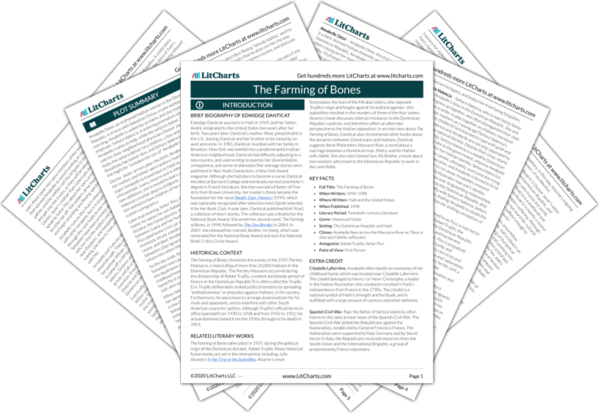Once again, the crowd and the justice of the people illustrate lessons about memory. The crowd—symbolic of the Haitian nation—grows and ebbs day by day, illustrating how memory is perpetually changing. On some days, memory is strong and enduring, just like the crowd’s drive to share their stories; on other days, it dwindles. The justice—the physical preserver of memory—disappears one day, however, showing that memory is always somewhat fallible and limited. The justice’s disappearance is a warning about how quickly memory can vanish, if it is not properly recorded and protected.
